How-To
by Jess Erdman, Content Marketing LeadFebruary 2023

How can eCommerce brands build the most accurate search in 2023 with smart product filters?
With thousands of products and service providers to choose from, there can be mixed messages or confusing information.
In this article, we’ll share with you the YesPlz Playbook for Building Accurate Search, using smart product filters.
Using powerful fashion AI, combined with hundreds of user interviews, we’ve designed laser accurate, smart product filters that are UX-friendly, optimized for shopper needs, and contain the most important product attributes.
We’ll focus on:
-Understanding the User’s Search Intent
-Implementing Advanced Search
-Leveraging AI Image Tagging to Build More Accurate Search
-Designing a UX-Friendly Interface
Let’s dive in:
The first step in building smart product filters is to understand the user's search intent. Search intent refers to the reason behind a user's search query. It could be to purchase a specific product, to learn more about a product, to compare different products, or to find a store or location.
At YesPlz, we interviewed hundreds of real shoppers to find out their specific search preferences. And what we found was fascinating: shoppers prefer to search by silhouette, and are aware of the parts of the body they want to hide or flaunt. Shoppers don’t compromise when it comes to their preferred silhouettes.
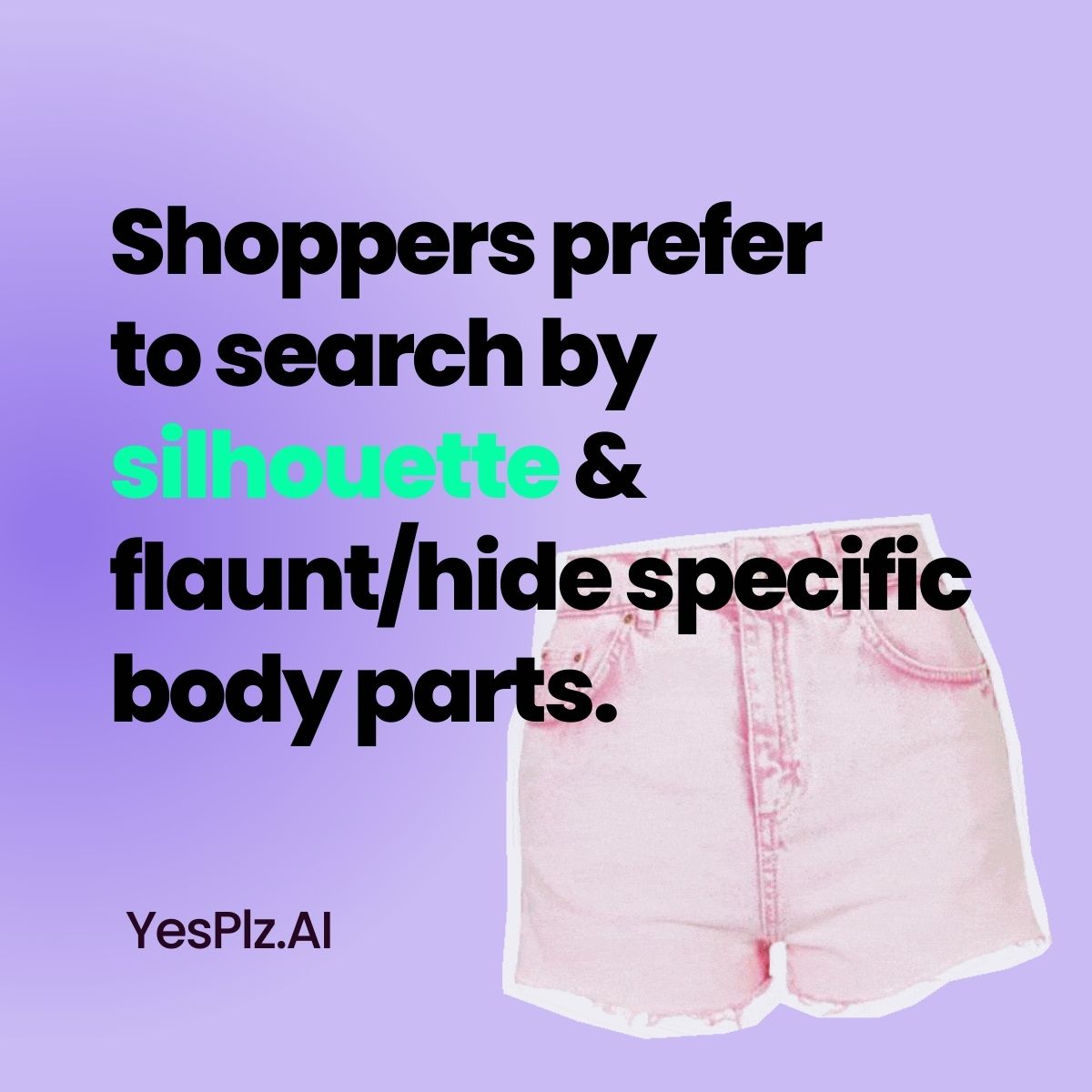
But, what does that mean for building accurate, smart product filters?
Using the shopper data, we trained fashion AI to identify complex product attributes, from theme (mood, occasion, or vibe) to neckline. Then, using those product attributes, we build smart product filters.
Algorithms play a crucial role in building smart product filters. Advanced search algorithms, such as semantic search, natural language processing, and machine learning, can help to provide more accurate search results.
For example, semantic search uses natural language processing to understand the context of a search query and provide results that match the user's intent. NLP is also important in gathering data from product descriptions. Machine learning algorithms can analyze user behavior and purchase history to provide personalized search results. Computer vision can quickly scan a product image and identify product attributes.
All of these algorithms combine to create the most accurate, smart product filters.
But, every service provider uses a differently trained algorithm (if any) to build product filers, resulting in varying quality.

At the core of effective smart product filters is one piece of crucial technology: AI image tagging.
AI image tagging in ecommerce is the use of artificial intelligence algorithms to automatically assign descriptive tags or labels to product images. These tags or labels help create robust product catalogs, leading to no more missed tags, and more accurate smart product filters.
AI image tagging involves using computer vision algorithms to analyze the visual features of an image and identify objects, colors, patterns, and other visual characteristics that can be used to describe the image. The AI algorithm then assigns relevant tags or labels to the image based on its analysis.
For example, if a product image depicts a red dress with floral patterns, an AI image tagging system may assign tags such as "red dress", "floral pattern", "fashion", "women's clothing", and so on.
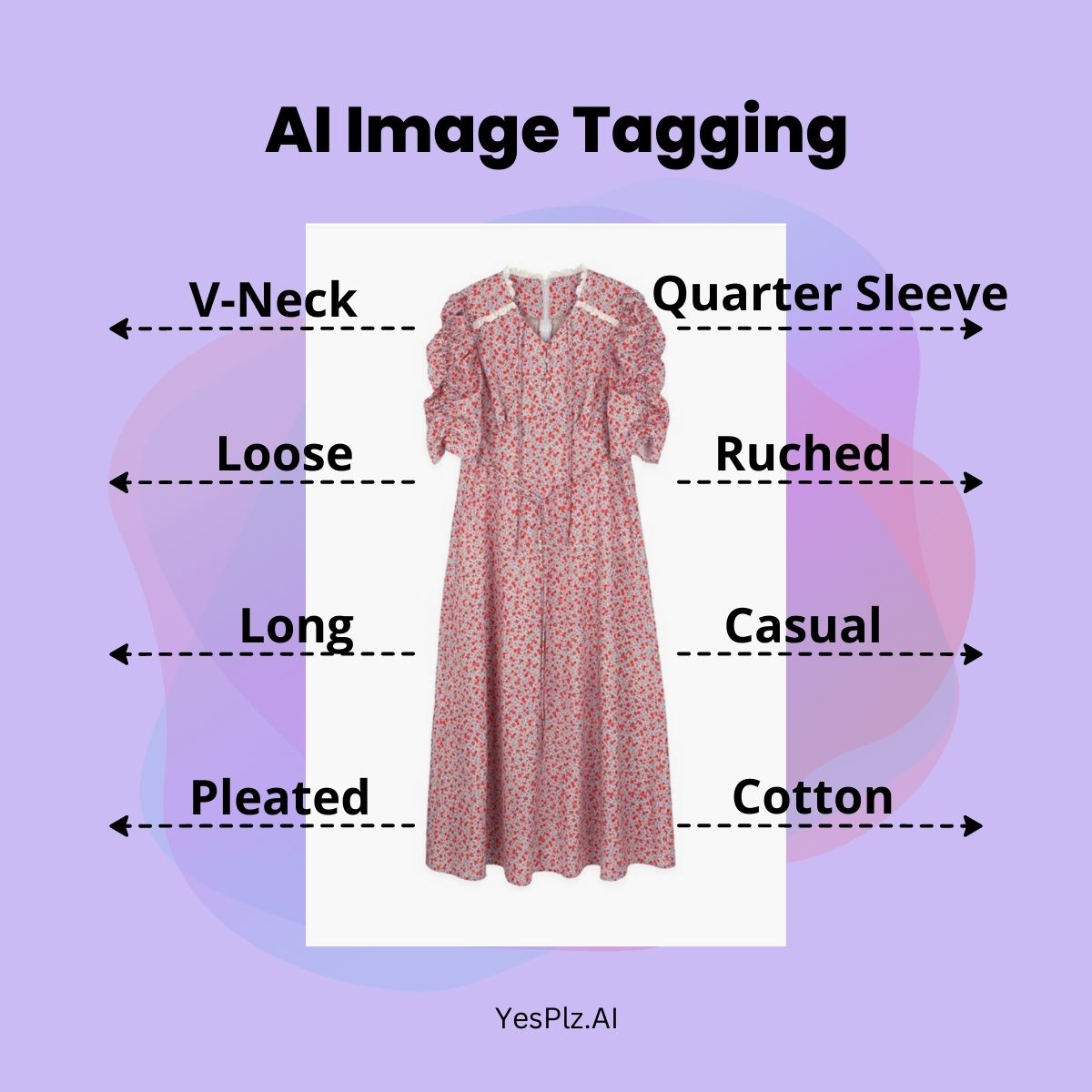
YesPlz AI takes AI image tagging to the next level by offering speed, accuracy, and unique tagging like theme or occasion.
So, the same red dress with floral patterns could also be categorized as a “vacation” dress or “going-out” dress in milliseconds.
Without precise tagging, it’s impossible to build smart product filters.
Finally, a user-friendly search interface is essential for accurate smart product filters. A well-designed search interface is intuitive, easy to navigate, and visually appealing. It should provide users with quick access to advanced search features, such as product filters and sorting options.
To design an effective search interface, eCommerce brands should follow best practices such as using clear and concise labels, optimizing the interface for mobile devices, using intuitive navigation, and integrating visual cues to help guide shoppers.
For example, the YesPlz virtual mannequin filter is an intuitive, AI-powered search interface that allows shoppers to filter on a realistic virtual mannequin. By tapping into the visual nature of shopping, the virtual mannequin filter is a visually appealing answer to dated UX interfaces.
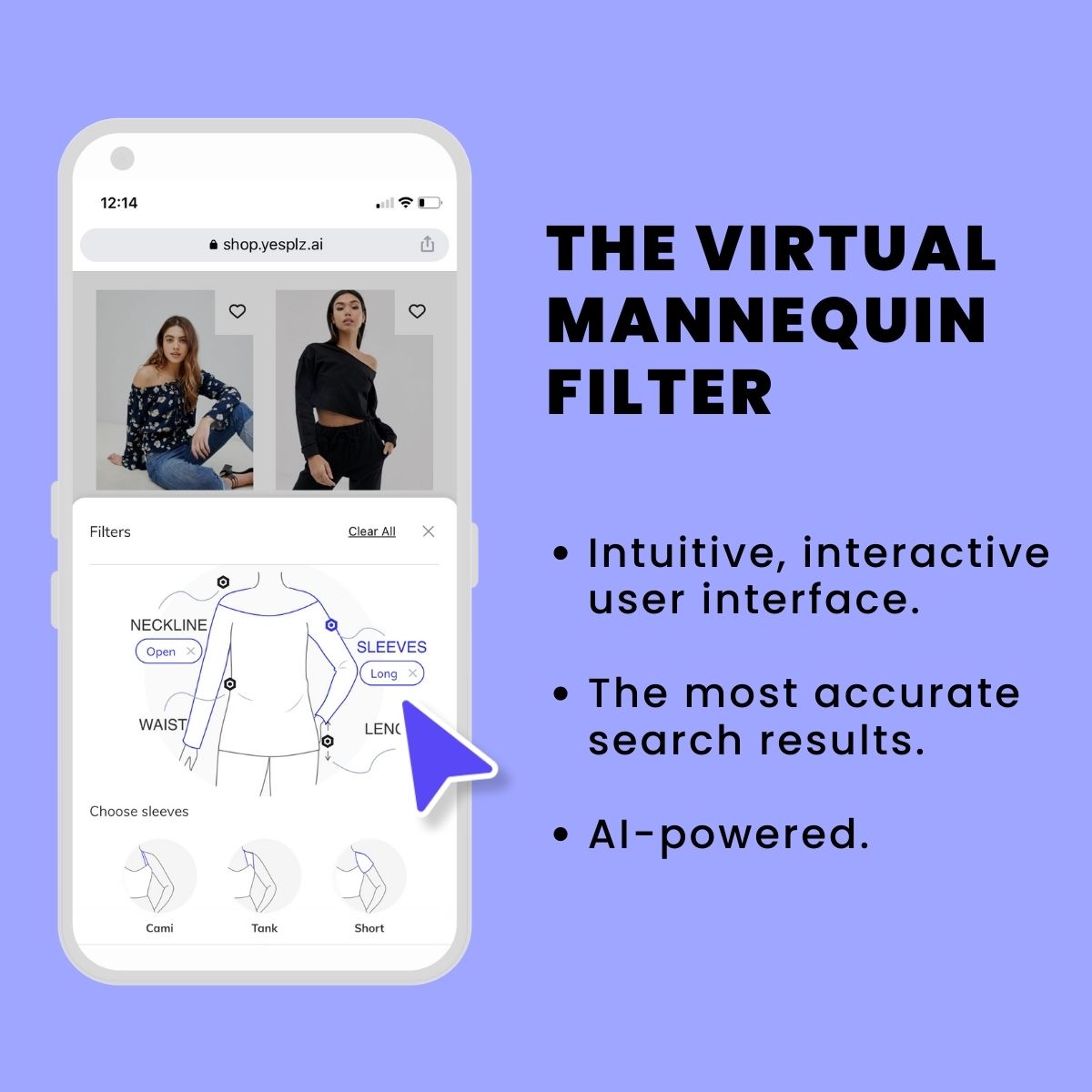
When it comes to typical, text-based product filtering, we also recommend that eCommerce brands:
Fortunately, AI-powered image tagging can also solve the above problems, and automatically provide filter descriptions that are easy to understand.
The most accurate search can be achieved using smart product filters. Is your eCommerce ready to experience it for yourself?
Written by Jess Erdman
Content Marketing Lead
I'm passionate about creating cool content. The best part? I get to learn new things about fashion tech and ecommerce everyday. Have an idea or opinion about this article? Reach out at jess@yesplz.ai
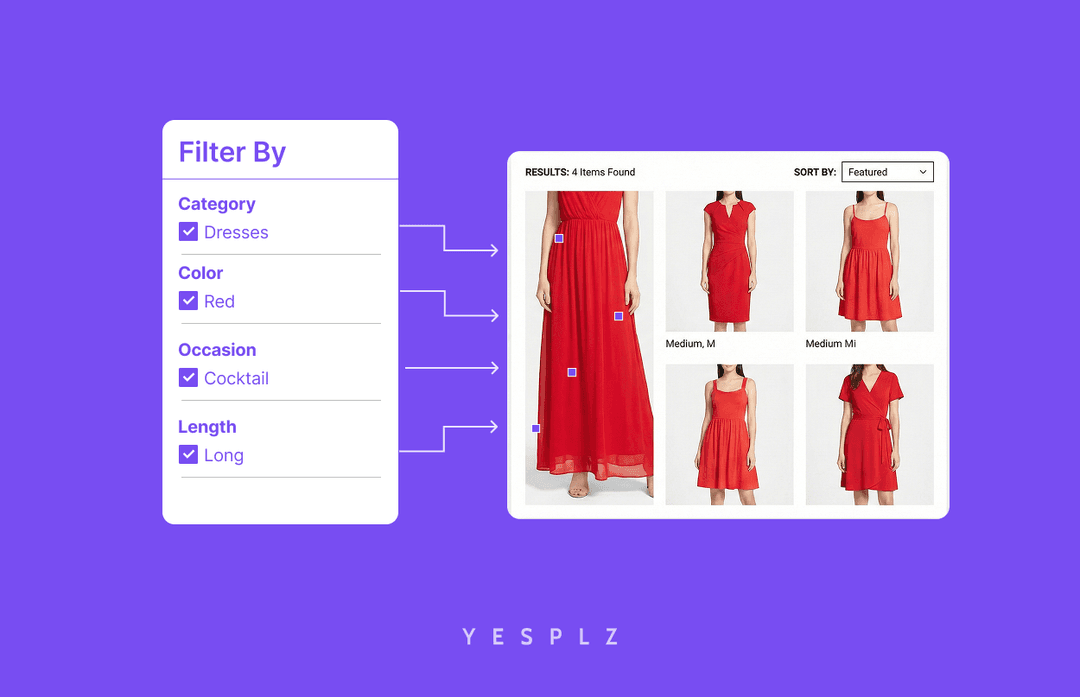
Stop losing sales to poor product filtering. Discover how AI simplifies creating Shopify filters, saving you 25-50 hours per 100 products.
by YesPlz.AI
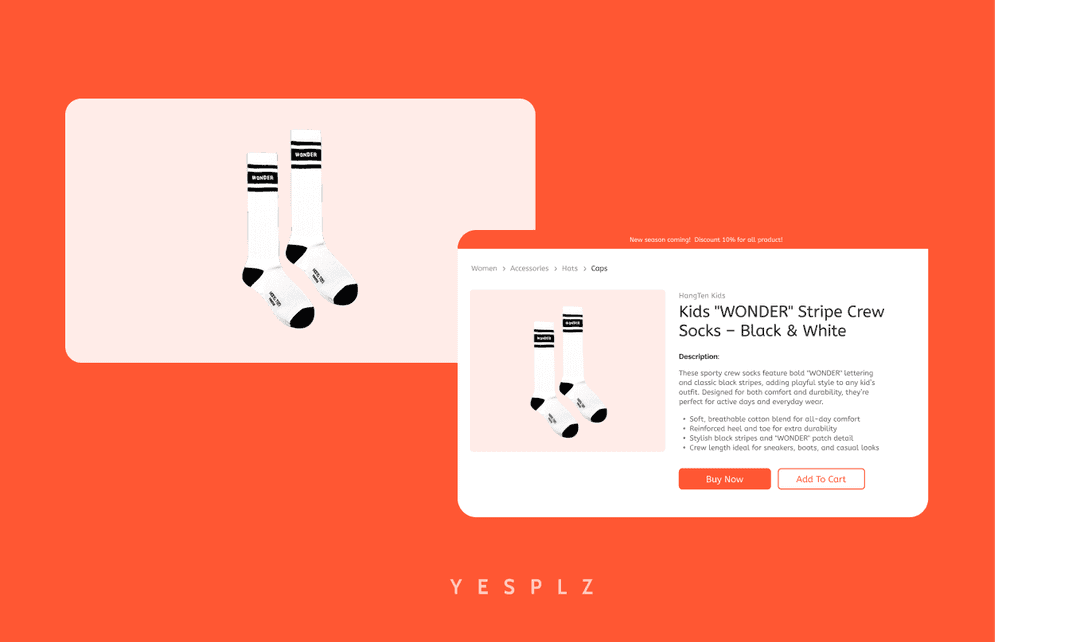
Automate Shopify product pages and cut 50–100 hours of manual work. AI generates product titles, descriptions, and metadata instantly from product images.
by YesPlz.AI